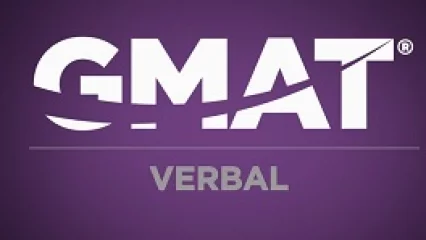This is a video recording of the webinar hosted by PrepAdviser on March 16, 2019. Its speaker was Aryama Dutta Saikia, expert tutor and COO at Jamboree Education. The discussion focused on how to apply successful solving strategies to questions in the Verbal Reasoning section, and achieve higher GMAT score.
There are 36 questions in the Verbal section of the GMAT test. About 13 of them are on Reading Comprehension, 12 on Sentence Correction and 11 on Critical Reasoning. You should keep in mind that the time stipulated for the different sets of questions is different. You will be given 65 minutes to solve all of the questions which equates to less than 2 minutes to solve per question—excluding the time to read passages and statements.
As a first step, try to familiarize yourself the best you can with the official GMAT guide, and when taking practice tests focus less on timing and more on accuracy. Your target time for solving SC questions a few weeks before sitting the GMAT should be 30-40 seconds per question for a total of 7 minutes; for the CR section aim for 2 minutes per question for a total of 22 minutes; for RC passages around 2.5 minutes per passage for a total of 10 and RC questions, an average of 2 minutes for a total of 26 minutes. On test day, you should aim for your accuracy to be around 70%.
Tips for Sentence Correction
Here are a few tips you can use when solving SC questions on the GMAT. To start with, do not read the entire sentence first; instead use your time wisely by scanning the answer options. You should immediately eliminate answer options that have spelling errors and use the wrong words. If you’re able to eliminate all four wrong options, you will, by default, be left with the correct answer. Finally, by carefully reviewing the official GMAT guide you should know and stick to the rules and indicators when sitting the exam.
Tips for Critical Reasoning
In order to solve a CR question with speed and accuracy, you should always read the question stem first. This will automatically allow you to focus on exactly what information to look for when reading the statement above it. Keep in mind that answer options are there to distract and confuse you, so a simple and effective tip to get around that is by writing down what you are required to find. Using this method will help you rule out any irrelevant information. Again, as in the SC questions, eliminate all wrong answer options, so leaving you with the correct one. However, you should be aware that there are specific elimination rules for CR questions. Compared to SC, where you can simply eliminate an answer due to poor grammar, ruling out wrong CR answer options is trickier when evaluating whether an answer reflects the main idea, is too extreme, or is making a wrong generalization.
Tips for Reading Comprehension
Accuracy in solving RC correctly dramatically decreases with the wrong attitude and mindset. Many test takers find the texts long and boring which prevents them from receiving a high score. Remember to read the passage carefully. Aryama adds:
Reading an RC passage is different from reading an online article or a book. Instead, it’s about anticipating what is going to be there next. That means taking clues from words and the tone of the author.
Also, as previously mentioned in other question types, eliminate wrong answer options by keeping a watchful eye for ones that don’t answer the question, use fancy language, or offer a new, irrelevant idea.
To see these tips being used in action, watch the entire webinar recording and solve some sample Verbal questions with explanations from expert tutor Aryama Dutta Saikia!
Check Out: GMAT Tutorials: GMAT Verbal – Word Problems



